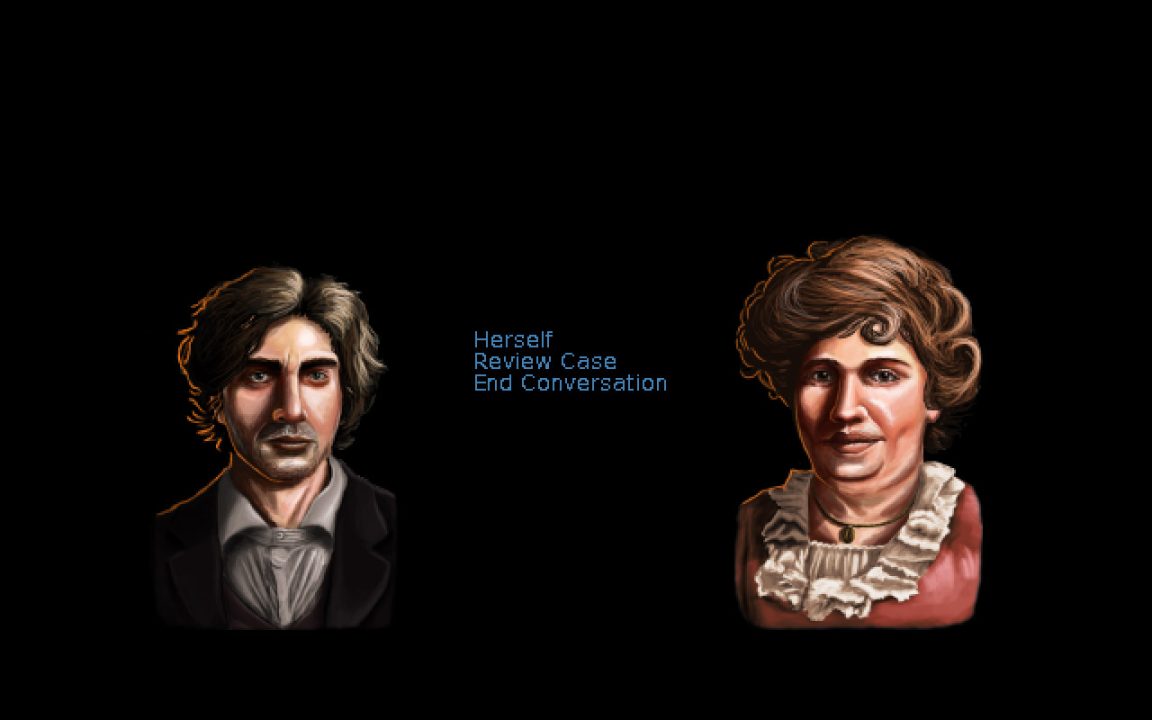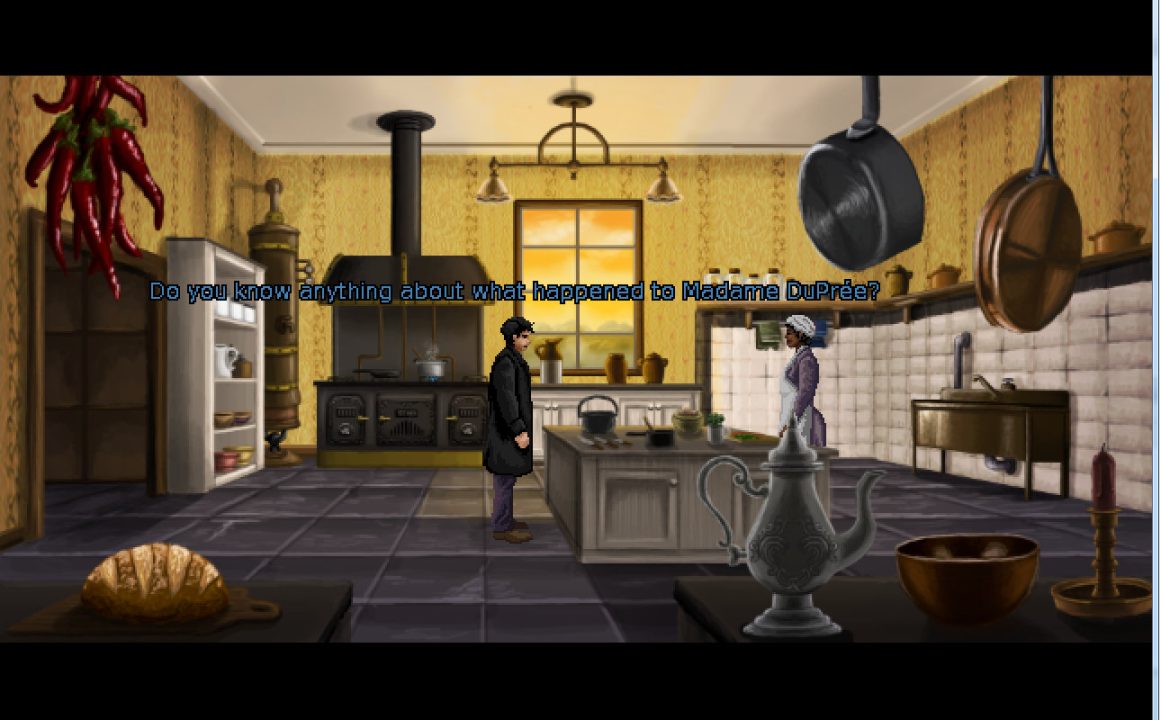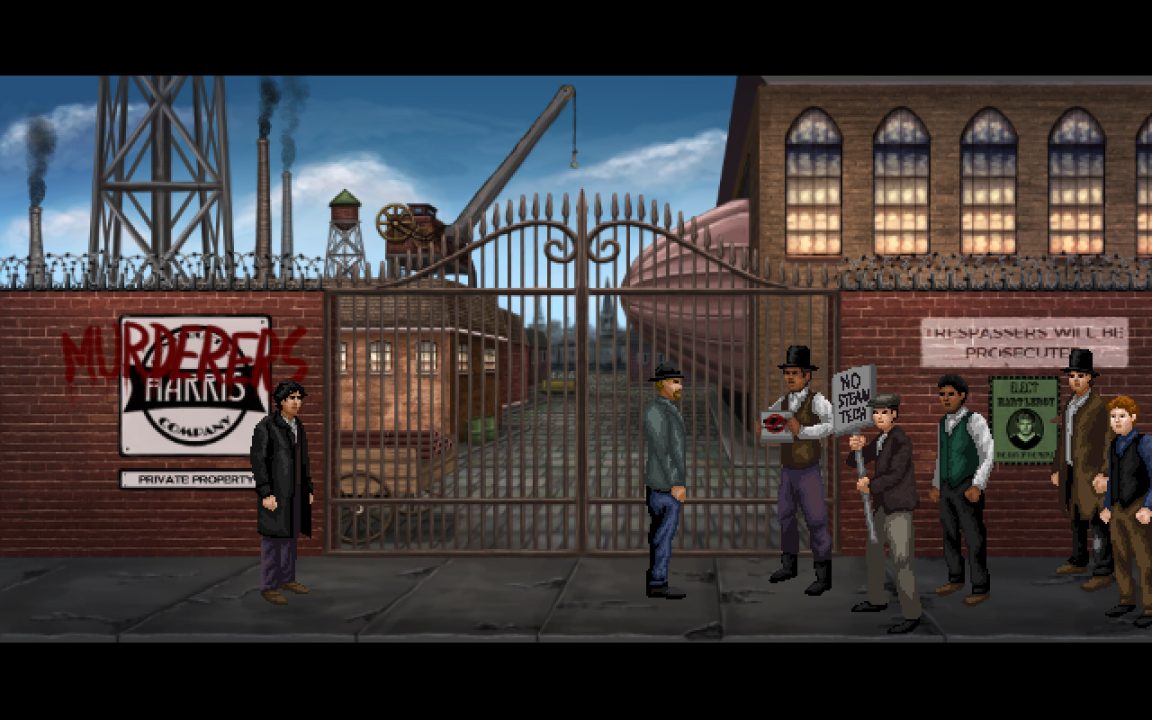The larger the light, the greater the shadow it casts. Such is the case for the “Lamplight City” in the indie graphic adventure of the same name. The Nintendo Switch port of Lamplight City by developer Grundislav Games and publisher Application Systems Heidelberg takes place in New Bretagne, an alternate history wonder of 19th Century America where advancements in steam technology pave the way for improvements. However, beneath the veneer of progress lies poverty and an often ignored ugly underbelly of crime and injustice.
The main character Miles Fordham is a police detective alongside his partner Bill. The pair go to one of New Bretagne’s poorer districts to investigate a series of robberies at a flower shop, but what seems like a routinely mundane case goes awry. In the aftermath, Miles loses his job with the police, barely maintaining a grip on his sanity. Haunted by failures and a persistent need to discover the truth while figuring out how to bring a killer to justice, Miles becomes a private detective. He deals with his demons in self-destructive ways, much to the chagrin of Bill, his loving wife Adelaide, and secretarial police friend Upton. Despite this, Upton brings Miles various cases she wants him to help solve with Bill’s continuing input.

Lamplight City is a steampunk mystery graphic adventure involving five cases for players to solve. The game takes an interesting approach to steampunk by focusing on a southern American city in an alternate history 1840s, as opposed to a Victorian England or Wild West setting. The exciting setting of New Bretagne houses contrasting societal classes, allowing players to gaze into the lives of the upper class alongside poorer residents. You quickly realize the unexpected lies beneath the surface.
Given the tale is set in 1840s America, prejudices against others based on ethnicity (one case has you uncovering an upper-class member of society who horrifically abuses their workers based on their differing ethnic backgrounds), gender (women, particularly in the lower class stratum of society, are not treated very compassionately by many in the game), and sexual orientation (Bill’s less than positive standing in the police department despite being a more than capable member of the force is a prime example of this) abound. I grit my teeth at some of the racist remarks directed at Adelaide (who happens to be a woman of color) by other characters, though it sadly makes the game more realistic, given the period.
I give Lamplight City credit for having a diverse cast of characters and never shying away from discussing the biases and prejudices they deal with. The cases and story themes that comprise Lamplight City’s narrative cover various topics, including murder, drug and alcohol use, child abduction, horrible abusive situations, and serial killings. I won’t go into more detail on the case specifics, as that would spoil the game’s mystery component, yet I’d advise caution when playing this game if you find any of those topics upsetting.

In typical graphic adventure form, you-as-Miles travel a point-and-click map of New Bretagne to different locations pertinent to the case you’re investigating. You talk to persons of interest at these sites and can point and click on various objects in the area to gain insight and determine if they’re relevant to the case. Clues and objectives get stored away for future review in your helpful casebook, which you can peruse at any time. Unfortunately, there is no inventory in Lamplight City. Instead, the game automatically decides what to do with a given clue once you learn about it. For example, a piece of paper you find might contain a hidden message, so the game will automatically pick it up and test it against the heat of a fireplace without you having to lift a finger.
There is only a small assortment of puzzles to check out, limiting chances for player interactivity in that vein, though it makes up for that by providing plenty of story decision points instead. Since the game’s sole focus is gathering information to solve its mysteries, Lamplight City reminds me of a visual novel that has point-and-click elements rather than what I typically associate with graphic adventures. As a VN fan, I don’t mind this gameplay approach, but I can see how it might be off-putting to fans of classic point-and-click graphic adventures.
Player choice and actions play critical roles in Lamplight City. Depending on what you say or do, you gain several clues and intel during investigations, often acquiring multiple suspects in a case based on what you’ve uncovered. Getting a “wrong” outcome or even declaring a case unsolvable doesn’t end the game. Instead, you move on to the next case with the game noting your past decisions. They might even have an impact on the final case’s outcome! Sometimes in an investigation, opting to say a particular train of thought out loud leads to disastrous consequences. Sometimes you have to rely on your intuition to figure out what to press or not press. I enjoy seeing how much interactivity is associated with decision-making, though there are instances where a guide is necessary for reaching specific scenes.

Lamplight City’s writing is easily the game’s strong point, with compelling mysteries at its core. The script editing is fantastic, and the different variations that can occur due to your decisions are excellent. Visually, the sprite work does an admirable job of differentiating characters. The backgrounds are gorgeously detailed, bringing New Bretagne to life. I like how conversations graphically play out, too, with close-ups of the conversing characters’ faces to give them more visual significance.
The characters of Lamplight City are realistic and often flawed, with several standouts among the cast. Miles is a fantastic protagonist, and I particularly enjoy his dynamic with the wisecracking Bill. Adelaide and Upton are also compelling characters. My favorite of the cast is the police coroner Doctor Edwards given his easy rapport with Miles, eagerness for his work, and general obliviousness to much else. The game’s fully voiced, and the few voice actors do a phenomenal job even with their multiple roles. Mark Benis also does a phenomenal job with the game’s soundtrack. Every piece is atmospheric and fitting for New Bretagne’s setting. I especially love the ending theme “Down Among the Dead Men” for its orchestral cues.
Lamplight City is an intriguing mystery and an enjoyable graphic adventure experience. I appreciate how choice-heavy the narrative is, and I also really like how the game adapts to your actions throughout. The alternate history steampunk setting is intriguing, and I appreciate the game’s commentary on complex subjects like poverty and prejudice. Fans of mystery and graphics adventures who haven’t yet played Lamplight City might want to check out the game’s Nintendo Switch port.


